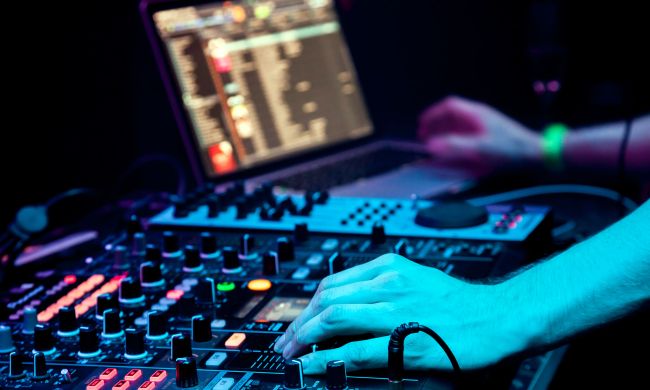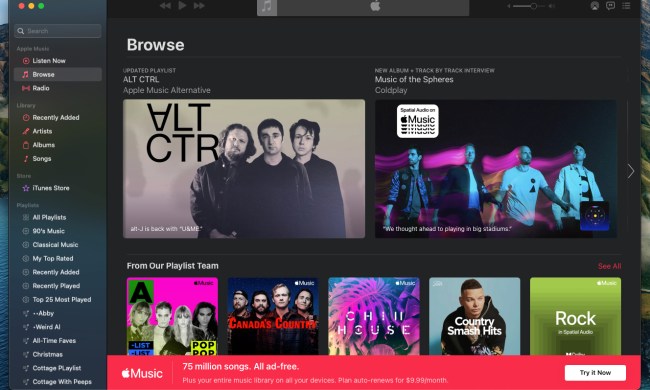“If you wouldn’t want to experience it in real life, you’re not going to want to experience it in VR.”
That’s Chris Milk, visual trailblazer and founder and CEO of VR studio Within, with what could be the first line in the virtual reality rule book. But regardless of whether you’re a fan of the multi-platinum rock band OneRepublic, you’re going to want to experience Kids, a VR music video for the group’s single and the first music video ever shot using Nokia’s OZO virtual reality camera.
The video (directed by music video veteran Hal Kirkland) follows a female and a male love interest in a vibrant section of Mexico City trying to get each other’s attention from bedroom windows that span a small alley. The entire video is one take; the only predetermined transitions are when the camera slowly glides from window to window. The members of OneRepublic are primarily situated in the busy alleyway between the two lovers, and for most of the video, the band isn’t the focal point — they’re almost Easter eggs for the inquisitive viewer who wants to look around. The video climaxes with one last transition before stopping above the alleyway to reveal the band performing a massive concert. (Love birds: Our couple connects in the end in the crowd.)
“The pubescent boy inside of my brain wishes George Michael’s Freedom was in VR, you’re in the flame, and then you’re standing next to Stephanie Seymour in her sweater.”
To make you feel like you’re gliding from room to room, Kirkland hung the $45,000 camera upside down to capture the alleyway below, dangling from a wire that wove back and forth. “If that camera had turned, weaved, or moved, it would’ve been uncomfortable for the viewer to look at,” Milk said during a panel following the screening. The discrepancy between what the viewer’s brain expects and what the eyes see would have meant discord. To create a seamless shot with numerous moving actors, everything was “choreographed and meticulously thought out; every single movement and every single second,” according to Kirkland
The panel included OneRepublic lead singer Ryan Tedder; Bart Saunt, head of new business at Universal Music Group; Chris Milk; Hal Kirkland; and Nokia’s head of presence capture, Guido Voltolina. They explained that two separate videos were shot for Kids — 2D and a VR version — in two days. At the screening, held at the NASDAQ building in New York City as part of Ad Week, Nokia spokespeople helped eager people strap on Samsung Gear VR headsets before launching the Kids experience.
In a move indicative of the growing importance of VR in the music industry, UMG actually pushed up the release date of Kids as an official OneRepublic single because of the VR video. “To be honest, this partnership with Nokia, Chris, and his team sped the process up,” Tedder said. The self-proclaimed lover of disruptive tech said in a later interview that the band will surely do more VR music videos, as long as they have what they need.
“The only inhibitor right now is the budget and time. If you need to turn around a music video quickly, right now, VR is not really opportune,” he told Digital Trends.
Nokia’s OZO was the first new product developed from the former phone giant’s reinvention following the sale of its mobile division to Microsoft in 2014. The camera was created by Nokia’s Digital Media Group, formed under the company’s Nokia Technologies business unit for licensing and R&D in emerging technology fields such as virtual reality. Kirkland even used Nokia’s editing system — OZO Creator — to stitch together the 360-degree stereoscopic experience of Kids.
Saunt told the audience he wanted to “make something amazing together to try and push the boundaries of VR.” But like the pair in the music video, falling in love is one thing, and happily ever after is something else entirely. Saunt later admitted that the label has failed more than it succeeded in the new medium. “We’ve already got 60-something pieces out in the market, and we’ve probably shot well over 100 that haven’t made it,” Saunt said. “We’ve made a lot of mistakes, but that’s how you learn to get it right.”
Saunt did not specifically mention UMG’s partnership with iHeartMedia. Ten months ago the companies announced plans to feature a VR experience from a UMG artist at each of iHeartMedia’s major events, such as this month’s iHeartRadio Music Festival. Since no VR experiences have materialized from this partnership, it’s safe to assume those were among the 100 mistakes made so far. Yet Milk praised the video, making sure to put everyone’s exuberance in perspective: “[Virtual reality is a] medium we don’t really understand how to tell stories in yet.”
The budget and time for regularly making VR music videos may not exist yet, but that didn’t curb Tedder’s enthusiasm when envisioning which of his favorite music videos he would have loved to see in virtual reality. “The pubescent boy inside of my brain wishes George Michael’s Freedom was in VR,” Tedder said to a chorus of laughter from the room. At one point in Michael’s music video, the image of a jukebox exploding is repeated between seductive shots of models. “You could have that explode and literally go around you, you’re in the flame, and then you’re standing next to Stephanie Seymour in her sweater.”
OneRepublic’s music video for Kids is available in virtual reality on the Oculus Rift and Samsung Gear VR by downloading the Within app (iOS, Android, Steam, Oculus), as well as on YouTube 360 and Facebook 360.





